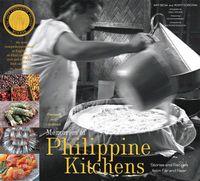Advertisement
Suman

Appears in
By Amy Besa and Romy Dorotan
Published 2006
Among the kakanin of the Philippines, the suman most probably predates all other rice cakes. It is the most primitive and is prepared the most simply, without the soaking, grinding, and leavening used for bibingka and puto. Suman refers to any cake—of rice, grain, and/or roots—wrapped in banana or coconut leaves and boiled. Suman are boiled because the grains are, for the most part, used whole rather than ground. The most popular suman in the Philippines are the suman sa ibus (ibus means coconut leaves, and these are formed into a tube that contains the suman) and suman sa ligia [suman cooked with lye water].

